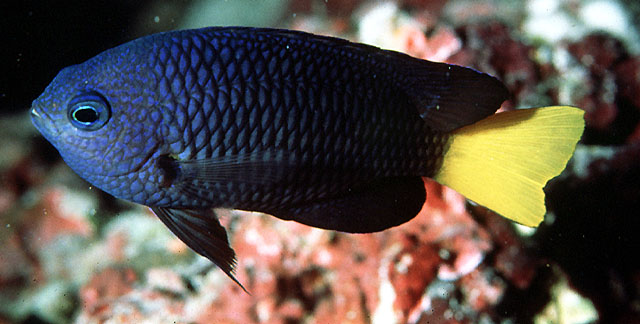| Pomacentridae (Damselfishes), subfamily: Pomacentrinae |
| 10 cm FL (male/unsexed) |
|
reef-associated; marine; depth range 1 - 20 m, non-migratory |
| Indo-West Pacific: Maldives to Rowley Shoals, New Caledonia,and north to the Ryukyu Islands. |
|
Dorsal soft rays (total): 13-15; Anal soft rays: 14-15; Vertebrae: 22-24. This species is distinguished by the following characters: an orange hue on the thorax and ventralmost part of the sides, and juveniles have an expanded yellow-to-orange zone posteriorly on the body, encompassing the soft dorsal and anal fins, caudal fin, and adjacent caudal peduncle (Ref. 114927). |
| Adults occur in lagoons, steep-sided channels, and seaward reefs from 2 to over 12 m (Ref. 1602). Usually found in groups off the sides of vertical drop-offs and overhanging ledges (Ref. 1602). Oviparous, distinct pairing during breeding (Ref. 205). Eggs are demersal and adhere to the substrate (Ref. 205). Males guard and aerate the eggs (Ref. 205). Diurnal species (Ref. 54980; 113699). Maximum depth reported taken from Ref. 128797. |
|
Least Concern (LC); Date assessed: 04 October 2021 Ref. (130435)
|
| harmless |
Source and more info: www.fishbase.org. For personal, classroom, and other internal use only. Not for publication.

